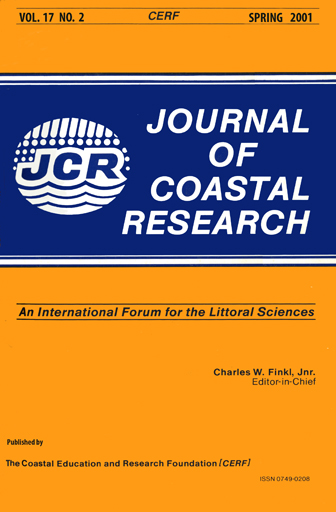Predicting the Depth, Across-Channel Location, and Speed Variability of Tidal Current Core Maxima at the Mouth of the Chesapeake Bay
Keywords:
Acoustic Doppler Current Profiler (ADCP), estuaries, current meter.Abstract
Reasonable prediction of the depth, across-channel location, and speed variability of tidal current core maxima at the mouth of the Chesapeake Bay can be determined to first order without an extensive deployment of current meters. Fourteen tidal current data sets were acquired with a shipboard Acoustic Doppler Current Profiler (ADCP) on track lines across the Bay mouth. Data sets were representative of fortnightly tidal range variation (spring, neap, and transitional), as well as semi-diurnal tidal current cycle phases (ebb, flood, and slack) for the months of June and September in four different years. Data indicated tidal current maxima were contained within a narrow jet-like core with a horizontal scale of O(1-2 km) and vertical scale of O(10 m). The depth, across-channel location, and speed of the maxima varied with the semi-diurnal tidal current cycle phase, and to a much lesser extent, with the fortnightly variation of tidal range. This temporal variability is modeled by least squares using a sinusoidal function, related to the dominant tidal current harmonic constituent, and a third-degree polynomial curve fit. Prediction algorithms from both models result in correlation coefficients for depth (0.95), across-channel location (0.97), and speed (0.93). National Oceanic and Atmospheric Administration (NOAA) tidal current tables had a speed correlation coefficient of only 0.79 when matched to observations. Comparison correlation coefficients for depth and across-channel location from NOAA tidal current tables could not be determined since the tables do not provide this information. This method provides a first-order, empirical means for predicting the depth, across-channel location, and speed variability of tidal current core maxima under conditions of similar atmospheric forcing and freshwater input without long-term deployment of current meters at multiple depths and locations. The method is not site-specific. Therefore, it may be applied at other locations and could be especially beneficial to estuaries where there are no tidal current meters or published tidal current information.


